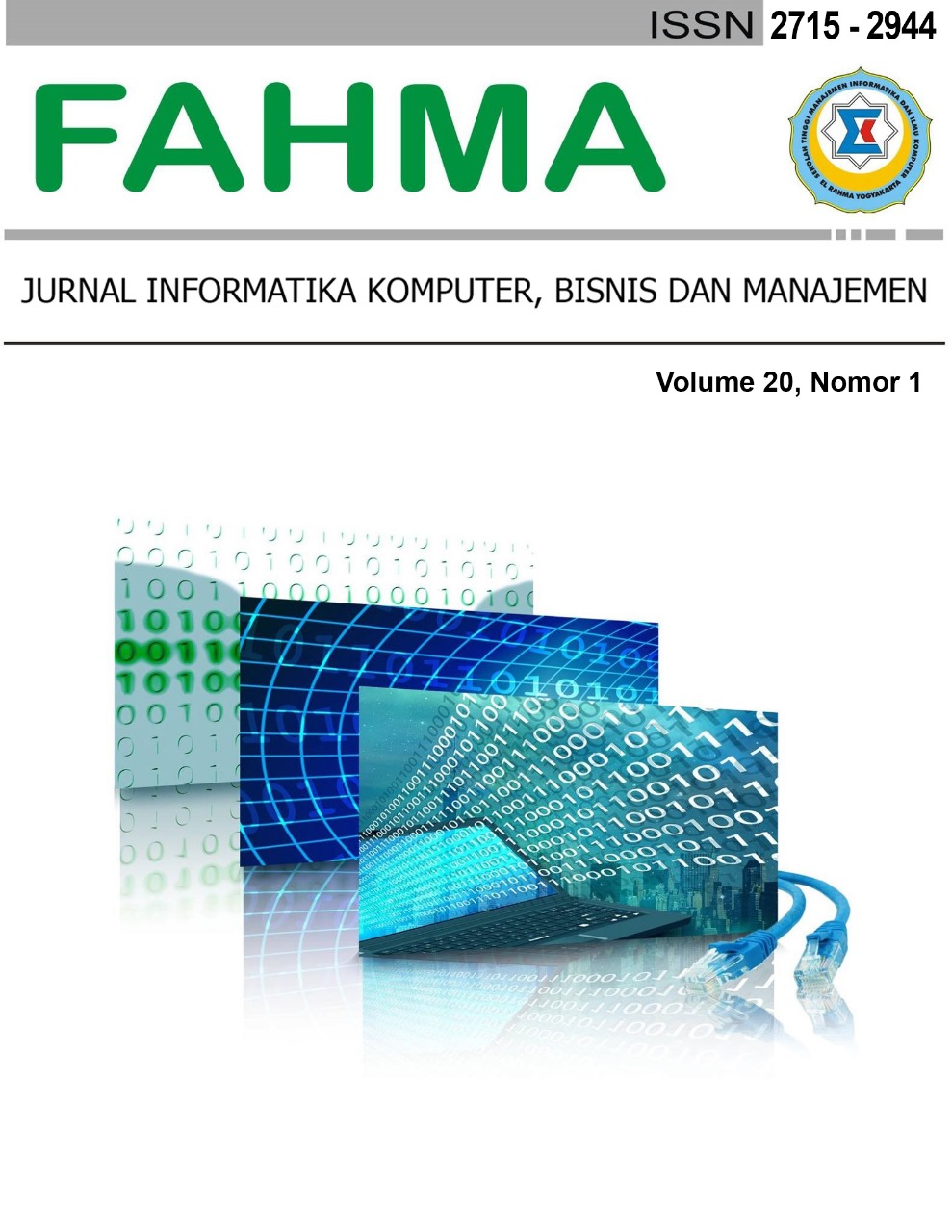SISTEM MONITORING SKRIPSI BERBASIS PROGESSIVE WEB APPLICATION DENGAN PUSH NOTIFICATION
DOI:
https://doi.org/10.61805/fahma.v20i1.42Kata Kunci:
Mobile-D, Push Notification, Progressive Web AppsAbstrak
The Covid-19 pandemic requires thesis guidance activities to be carried out online. If the tertiary institution does not have a proper thesis monitoring system, the guidance process will not run smoothly and on time. This study aims to create a thesis monitoring system using Progressive Web Application (PWA) technology with a software development method using mobile-D. The development stage begins with the construction of a system architecture in the form of use cases and activity diagrams. Then the initialize stage is translating the system architecture design into an application interface design. Next is the stage of translating the design into an actual application using lumens and mariaDB on the server side and javascript and indexedDB on the client side. After each module is completed, the system functionality modules are integrated into a whole application into a thesis monitoring system. Then the software functionality testing is carried out, especially when it is run on a smartphone. The test results indicate that there are no bugs or errors found when running on laptop or mobile devices
Unduhan
Referensi
N. B. Argaheni, “Sistematik Review: Dampak Perkuliahan Daring Saat Pandemi COVID-19 Terhadap Mahasiswa Indonesia,” PLACENTUM J. Ilm. Kesehat. dan Apl., vol. 8, no. 2, p. 99, 2020, doi: 10.20961/placentum.v8i2.43008.
M. R. Ramadhan, L. E. Nugroho, and S. Sulistyo, “Perancangan Sistem Informasi Monitoring Skripsi,” in Proceedings of Conference on Information Technology and Electrical Engineering, 2017, pp. 290–295.
B. E. Kusuma, “Sistem Informasi Bimbingan Skripsi Berbasis Web Di Universitas Pelita Harapan,” J. ISD, vol. 3, no. 1, pp. 71–78, 2018.
N. M. Neva Satyahadewi, “Sistem Informasi Monitoring Tugas Akhir (SIMTA),” J. Comput. Eng. Syst. Sci., vol. 4, no. 1, pp. 83–87, 2019.
Y. Wiyatmo, “Efektivitas Bimbingan Tugas Akhir Skripsi ( TAS ) Mahasiswa Jurusan Pendidikan Fisika FMIPA UNY,” in Prosiding Seminar Nasional Penelitian, Pendidikan dan Penerapan MIPA, 2010, pp. 405–414.
C. Rojas, Building Progressive Web Applications with Vue.js: Reliable, Fast, and Engaging Apps with Vue.js. New York: Apress Media LLC, 2019.
Nurwanto, “Penerapan Progressive Web Application (PWA) pada E-Commerce,” Techno.Com, vol. 18, no. 3, pp. 227–235, 2019, doi: 10.33633/tc.v18i3.2400.
A. Setiawan, D. S. Rusdianto, and A. P. Kharisma, “Pengembangan Sistem Pelaporan Gangguan Berbasis Web dengan menggunakan Teknologi Progressive Web Application ( Studi Kasus : Unit IT PT . Kereta Api Indonesia Daerah Operasi III Cirebon ),” J. Pengemb. Teknol. Inf. dan Ilmu Komput., no. 5, pp. 4194–4203, 2019.
G. L. Dewi and S. Tjandra, “Pemanfaatan Progressive Web Apps Pada Web Akuntansi,” Teknika, vol. 9, no. 1, pp. 38–47, 2020, doi: 10.34148/teknika.v9i1.252.
T. Ater, Building Progressive Web Apps. Sebastopol, California: O’Reilly Media, 2017.
A. Yulianto and D. P. Wigandi, “Implementasi Mobile-D Dalam Pengembangan Aplikasi Mobile Berbasis Android,” in Seminar Nasional Inovasi dan Tren (SNIT), 2018, no. August, pp. 1–6.
R. Andri, N. A. O. Saputri, and M. Akbar, “Sistem Notifikasi Tugas Akhir Universitas Bina Darma Berbasis Mobile,” Sistemasi, vol. 9, no. 1, p. 155, 2020, doi: 10.32520/stmsi.v9i1.630.
S. P. Mukherjee, A Guide to Research Methodology : An Overview Of Research Problems, Tasks and Methods. New York: Taylor & Francis Group, LLC, 2020.
G. P. P, R Hamsini, and Smitha G R, “Agile Development Methodology and Testing for Mobile Applications - A Survey,” Int. J. New Technol. Res., vol. 2, no. 9, pp. 98–101, 2012.
H. K.Flora, S. V. Chande, and X. Wang, “Adopting an Agile Approach for the Development of Mobile Applications,” Int. J. Comput. Appl., vol. 94, no. 17, pp. 43–50, 2014, doi: 10.5120/16454-6199.
S. R. Jan, S. T. U. Shah, Z. U. Johar, Y. Shah, and F. Khan, “An Innovative Approach to Investigate Various Software Testing Techniques and Strategies,” IJSRSET, vol. 2, no. 2, pp. 682–689, 2016.









